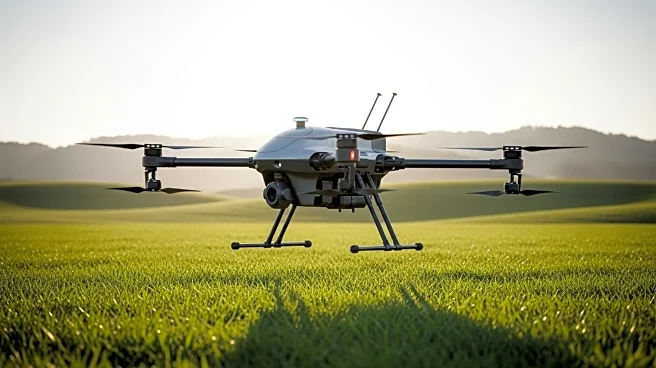What is the story about?
What's Happening?
The agricultural drone market is experiencing significant growth, with its size valued at USD 6.01 billion in 2024. The market is projected to expand at a compound annual growth rate (CAGR) of 30.70% from 2025 to 2032, potentially reaching USD 51.18 billion by 2032. This growth is attributed to the integration of advanced UAV technologies in precision agriculture, which includes crop monitoring, soil analysis, irrigation management, and pest control. These drones, equipped with multispectral, hyperspectral, and thermal sensors, provide real-time insights that aid in decision-making, ensuring healthier crops and optimized yields. Innovations in autonomous flight systems, AI-powered analytics, and IoT integration are making drones more efficient and easier to operate. Government initiatives promoting precision agriculture and subsidies for drone adoption are further driving market penetration.
Why It's Important?
The expansion of the agricultural drone market is crucial for modern farming practices, as it enhances productivity while reducing labor costs and environmental impact. The adoption of smart farming practices positions drones as essential tools in sustainable agriculture, offering data-driven solutions that improve crop health and yield. This technological advancement supports the global agriculture landscape by promoting environmental sustainability and efficient resource management. Stakeholders in the agricultural sector, including farmers, drone manufacturers, and policymakers, stand to benefit from the increased efficiency and reduced costs associated with drone usage.
What's Next?
The agricultural drone market is expected to continue its growth trajectory, with further innovations in drone technology and increased adoption of precision farming practices. Startups and established manufacturers are likely to develop more lightweight and energy-efficient models, capable of covering large fields with minimal human intervention. As government initiatives and subsidies continue to support drone adoption, the market penetration is expected to increase, potentially leading to widespread use of drones in agriculture. Stakeholders may focus on enhancing drone capabilities and expanding their applications to further optimize farming practices.
Beyond the Headlines
The rise of agricultural drones also presents ethical and legal considerations, such as privacy concerns related to data collection and the regulation of drone usage in farming areas. As drones become more prevalent, there may be discussions around the balance between technological advancement and the protection of individual rights. Additionally, the long-term impact of drones on traditional farming practices and rural employment may be explored, as automation could alter the agricultural workforce landscape.
AI Generated Content
Do you find this article useful?
















